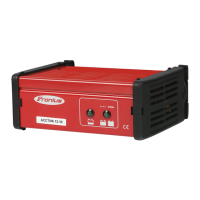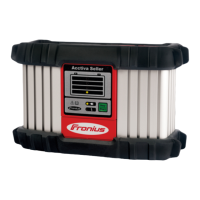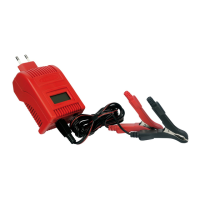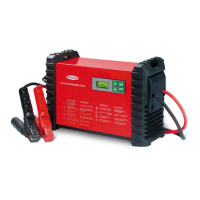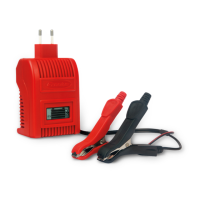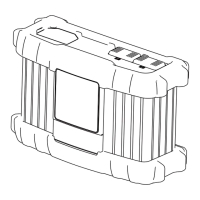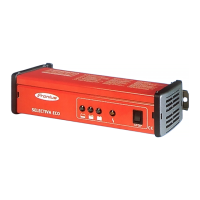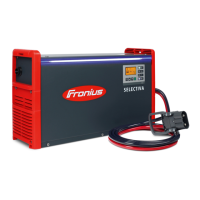III
ud_fr_ls_sv_01055 022007
Protecting
yourself and
others
While the charger is in operation, keep all persons, especially children, out of
the working area. If, however, there are people in the vicinity,
- warn them about all the dangers (hazardous acids and gases, danger
from mains and charging current, etc),
- provide suitable protective equipment.
Before leaving the work area, ensure that no-one or nothing can come to any
harm in your absence.
- Chargers with PE conductors must only be operated on a mains supply
with a PE conductor and a socket with an earth contact. If the charger is
operated on a mains without a PE conductor or in a socket without an
earth contact, this will be deemed to be gross negligence. The manufac-
turer shall not be liable for any damage resulting from such improper use.
- Only operate the charger in accordance with the degree of protection
shown on the rating plate.
- Under no circumstances operate the charger if there is any evidence of
damage.
- Ensure that the cooling air can enter and exit unhindered through the air
ducts on the charger.
- Have the mains and charger supply checked regularly by a qualified
electrician to ensure the PE conductors are functioning properly.
- Any safety devices and components that are not functioning properly or
are in an imperfect condition must be repaired by an qualified technician
before switching on the charger.
- Never bypass or disable protection devices.
- After installation, a freely accessible mains plug will be required.
Safety measures
in normal mode
General informa-
tion regarding
the handling of
batteries
- Protect batteries from dirt and mechanical damage.
- Store charged batteries in a cool place. Self-discharge is kept to a mini-
mum at approx. +2° C (35.6° F).
- Every week, perform a visual check to ensure that the acid (electrolyte)
level in the battery is at the Max. mark.
- If any of the following occurs, do not start the machine (or stop immedia-
tely if already in use) and have the battery checked by an authorised
workshop:
- uneven acid levels and/or high water consumption in individual cells
caused by a possible fault.
- overheating of the battery (over 55° C/131° F).
- On no account inhale any of the gases and vapours released
- Make sure the area is well ventilated.
- To prevent short circuits, do not place any tools or conductive metals on
the battery
- Battery acid must not get into the eyes, onto the skin or clothes. Wear
protective goggles and suitable protective clothing. Rinse any acid splas-
hes thoroughly with clean water, seek medical advice if necessary.
Risks from acid,
gases and va-
pours
(continued)

